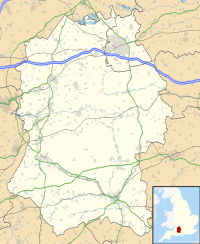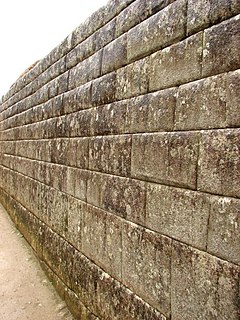
Mere is a small town and civil parish in Wiltshire, England. It lies at the extreme southwestern tip of Salisbury Plain, close to the borders of Somerset and Dorset. The parish includes the hamlets of Barrow Street, Burton, Charnage, Limpers Hill, Rook Street and Southbrook.

Donhead St Mary is a village and civil parish in southwest Wiltshire, England, on the county border with Dorset. The village lies about 2 1⁄2 miles (4.0 km) east of the Dorset town of Shaftesbury and stands on high ground above the River Nadder, which rises in the parish.

Leigh Delamere is a small village in the civil parish of Grittleton in the English county of Wiltshire, about 4 miles (6 km) northwest of the town of Chippenham. The M4 motorway passes some 250 metres to the south, and the motorway's Leigh Delamere services lie to the east of the village.
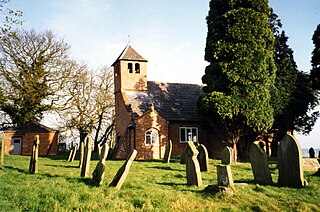
St Chad's Chapel is an isolated church in the scattered community of Tushingham in the civil parish of Tushingham-cum-Grindley, Macefen and Bradley, Cheshire, England. The only approach to the chapel is on footpaths across fields from the A41 road. It is recorded in the National Heritage List for England as a designated Grade I listed building.

Bradenstoke is a village in Wiltshire, England situated to the north of the former RAF Lyneham airbase and 1.5 miles (2.4 km) northwest of Lyneham. Originally lying within Braydon Forest, the "stoke" means "settlement".
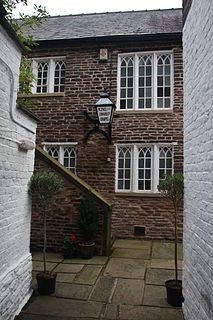
King Edward Street Chapel, Macclesfield is in the town of Macclesfield, Cheshire, England. It is recorded in the National Heritage List for England as a designated Grade II* listed building.

St Wilfrid's Church is in Main Street, Melling, Lancashire, England. It is recorded in the National Heritage List for England as a designated Grade I listed building, and is an active Anglican church in the united benefice of East Lonsdale, the deanery of Tunstall, the archdeaconry of Lancaster and the diocese of Blackburn. Its benefice is combined with those of St Peter, Leck, St John the Baptist, Tunstall, St James the Less, Tatham, the Good Shepherd, Lowgill, and Holy Trinity, Wray.

The Historic Chapels Trust is a British Registered Charity set up to care for redundant non-Anglican churches, chapels, and places of worship in England. To date, its holdings encompass various nonconformist Christian denominations and Roman Catholic sites.

Cote Baptist Church stands in Shifford Road, Cote, 1 mile (2 km) to the east of Aston and 4 miles (6 km) to the east of Bampton, in Oxfordshire, England. It is a redundant Baptist chapel in the care of the Historic Chapels Trust, and is recorded in the National Heritage List for England as a designated Grade II* listed building.
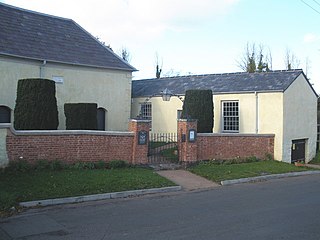
Salem Chapel, East Budleigh is in Vicarage Road, East Budleigh, Devon, England. Initially a Presbyterian, then a Congregational chapel, it was later owned by the Assemblies of God, and is now owned by the Historic Chapels Trust. The chapel, together with the adjacent assembly room and the boundary walls, is recorded in the National Heritage List for England as a designated Grade II* listed building.

Old St John the Baptist's Church is a redundant Anglican church in the village of Pilling, Lancashire, England. It stands 100 metres (109 yd) to the south of the new church, also dedicated to St John the Baptist. The church is "an unusual survival of a small Georgian church". It is recorded in the National Heritage List for England as a designated Grade II* listed building, and it is under the care of the Churches Conservation Trust.
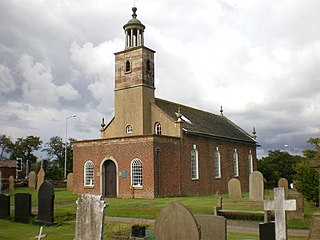
St Mary's Church is a redundant Anglican church on the A59 road as it passes to the south of the village of Tarleton, Lancashire, England. It is recorded in the National Heritage List for England as a designated Grade II* listed building, and is under the care of the Churches Conservation Trust. It is described by the Churches Conservation Trust as a "picturesque early Georgian chapel" with "a lovely unspoiled interior".

St John the Evangelist's Church is a redundant Anglican church in North Road, Lancaster, Lancashire, England. It is recorded in the National Heritage List for England as a designated Grade II* listed building, and is under the care of the Churches Conservation Trust.

Old St Stephen's Church is a redundant Anglican church standing on a hillside in Fylingdales, overlooking Robin Hood's Bay, North Yorkshire, England. It is recorded in the National Heritage List for England as a designated Grade I listed building, and is under the care of the Churches Conservation Trust.

St Mary's Church is a redundant Church of England parish church in the village of Roecliffe, North Yorkshire, England. It is a Grade II* listed building and is in the care of the Churches Conservation Trust.

St Mary's Church in Old Dilton, Wiltshire, England was built in the 14th century. It is recorded in the National Heritage List for England as a designated Grade I listed building, and is now a redundant church in the care of the Churches Conservation Trust. It was declared redundant on 26 April 1973, and was vested in the Trust on 6 September 1974.

St Mary & St Lawrence's Church in Stratford Tony, Wiltshire, England, was built in the 13th century. It is recorded in the National Heritage List for England as a designated Grade I listed building, and is now a redundant church in the care of the Churches Conservation Trust. It was declared redundant on 1 October 1984, and was vested in the Trust on 26 March 1986.

Horsham Unitarian Church is a Unitarian chapel in Horsham in the English county of West Sussex. It was founded in 1719 to serve the large Baptist population of the ancient market town of Horsham—home of radical preacher Matthew Caffyn—and the surrounding area. The chapel's congregation moved towards Unitarian beliefs in the 19th century, but the simple brick building continued to serve worshippers drawn from a wide area of Sussex. It is one of several places of worship which continue to represent Horsham's centuries-old tradition of Protestant Nonconformism, and is the town's second oldest surviving religious building—only St Mary's, the parish church, predates it. English Heritage has listed the chapel at Grade II for its architectural and historical importance.

All Saints Church is a parish church in Hollingbourne, Kent. It was begun in the 14th century and is a Grade I listed building. The church contains numerous monuments to the local Culpeper family.



